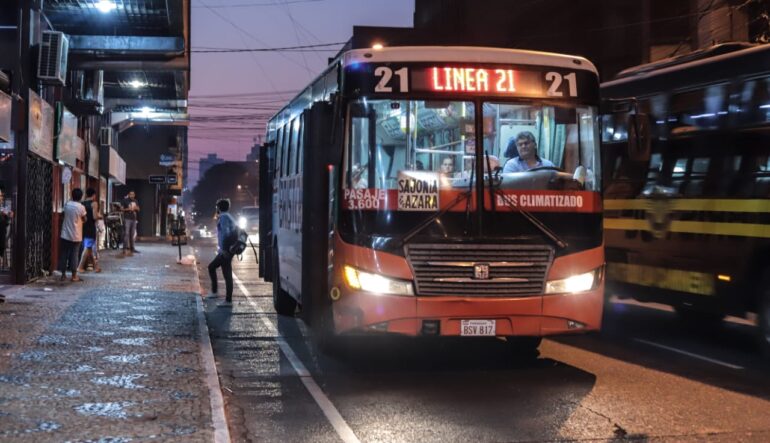The Paraguayan government has announced short-term measures to improve public transportation services in Asunción, which will take effect whilst a bill to reform public transportation services makes its way through Parliament. The key initiatives are a new single bus lane, the construction of new bus stops, and a project for implement a 24-hour transport service in the capital city.
MOPC Deputy Minister of Transport Emiliano Fernández indicated that the objective of having buses at night and early in the morning would first be implemented on the routes which travel through areas known to be hubs for the city’s nightlife, and was expected to take around two to three months to be up and running.
Fernández was very clear about what he aimed to achieve: “We must give people certainties that they can return home by bus,” he said in conversation with government spokeswoman Paula Carro, where he provided more details about the bill going through parliament.
The new single lane for buses, which is expected to help reduce journey times, will go from the National University of Asunción (UNA) to Avenida Madame Lynch, on the Mariscal Estigarribia Route.
Fernández was clear that the improvements to public transport service must also be accompanied by a higher frequency of buses. He announced that new busses with a combined total of 1,000 seats are already planned for deployment within the next four years, while in the coming months the 30 electric buses donated by Taiwan will arrive, which will also be incorporated into the system.
Another short-term measure is the construction of stops that provide greater security on the main avenues of access to the capital. These will be located 400 meters apart, which in addition to the addition of specific bus lanes, will allow for greater fluidity in the transit of passenger buses.
The Municipality of Asunción also plans to implement a range of additional measures to give greater agility to transit generally, such as the coordination of traffic lights and the expansion of turning space at junctions.



interesting!